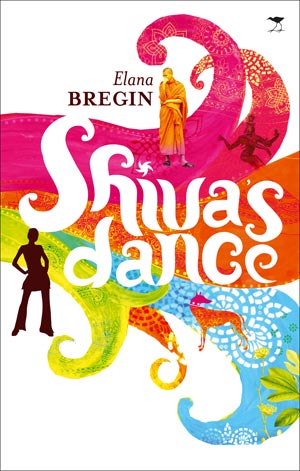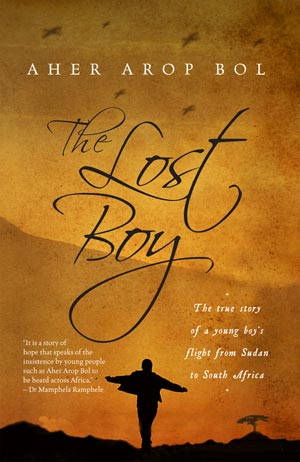Jane Austen was convinced that “the family was the source of art”, says her biographer, Carol Shields, who adds, “just as every novel is in a sense about the fate of a child”. Whatever one’s views on the great mysteries of novel writing, there are still many writers and novelists whose work is focused rather closely on family and the “fate of a child”. Three such books arrived on my desk together, each dealing with trauma in childhood.

Aher Arop Bol’s autobiography, The Lost Boy, is an extraordinary account of how he lived almost his entire childhood in refugee camps down the eastern side of Africa, from Ethiopia to Southern Africa. Born in southern Sudan of Dinka-speaking parents, he was saved by his uncle, who carried him on his shoulders away from the soldiers of Omar Hassan al-Bashir. The uncle joined the rebel forces, the Sudanese People’s Liberation Army, leaving the children in a camp in Ethiopia.
So, at the age of three, Bol found himself separated from his parents and in the care of his cousins, fellow refugees. This amazing account tells the inside story of these “lost”, or at least displaced, children; raised in camps in loosely organised groups of 10, some survived starvation while they saw hundreds die around them. They learned to cooperate with each other and made deep friendships with other jijamers or “those who break the bush”.
Bol tells of sorties into the forests to find cattle hidden from the soldiers, of “breaking the bush” in the roadless wilderness while trying to find camps that had some food and better conditions. Many of the children even managed to get some schooling, initially learning to read and write in the dust.
Bol had many benefactors, from the United Nations High Commissioner for Refugees to a Bengali man he met on a bus in Malawi and an Afrikaner woman in Pretoria.

The book ends with a moving return to his village and family, where he, in turn, becomes a benefactor to his young brothers. Sadly, he does not seem to have sent his sisters to school, but perhaps it just didn’t get into the book.
This is a gripping read, not only for the high drama of Bol’s survival but also because he holds the disrupted story together with dignity and passion.
Elana Bregin’s Shiva’s Dance is unpretentious, simply told and profoundly moving. Although it could be read with great enjoyment and benefit by teenagers, it will certainly engage any reader interested in how we deal with adversity and how we learn, or don’t learn, to manage our adult lives.
Gerry Aarons is the 16-year-old protagonist, living with her singleparent mother in a vortex of negativity, resentment and anger. The anguish of Gerry — insolent, beautiful, difficult and self-destructive — is entirely convincing. She does well academically but gradually begins to engage in really risky behaviour. Flouting her mother’s obsessive control, she leaves her phone, which tells her mother where she is, in her school locker, and spends time in a nearby park, alone.
This, one of her least dangerous escapades, is where she meets a Buddhist monk and his dog, Shiva. The wise old man becomes her only confidant. Bregin’s portrayal of the conflict between the abused and abusive mother and the daughter clamouring to self-destruct is well caught, and her presentation of solutions comes as a relief to the reader. Shiva, the dog, plays an interesting role.
The novel also gives an understated reflection of the cultural, religious and racial complexity of Durban now.

There is a gentle pointing in the direction of spiritual healing through wise counsel and real concern, as well as meditation and music.
It is a lovely book.
Counting Sleeping Beauties by Hazel Frankel is so full of period detail recalling white suburbia in Johannesburg in the 1950s and 1960s that it reads like an autobiography. But it is a novel, narrated in the first person by three generations of women in a Jewish family, as well as by the nanny who cares for the youngest.
The story revolves around a two- year-old whose death might have been prevented by one of the four narrators: her grandmother Leah, mother Susan, sister Hannah and Nanny Sina.
The most poignant thread is Hannah’s, who is only five at the time her sister dies and whose life is most seriously affected by it and the subsequent disintegration of her family. Frankel explores the lives of each narrator.
Bobba Leah has memories of the oppression of the Jews in Lithuania, but, for her, migration to South Africa means peace, opportunity and prosperity. In contrast to this is Sina’s life. Separated from her family and her only child, her relatively safe and manageable life in domestic service is also an experience of oppression.
This is quietly acknowledged by the author, even if her characters don’t seem to have noticed — except for Hannah, who loves Sina and is mothered by her, but is too young to understand apartheid.
All the narrators tend to sentimental hoarding of cultural memories as if the author is determined to record things in danger of being lost, such as Yiddish phrases and expressions, Sesotho and English songs, fashions of the day, children’s games.
The title of the book comes from the game of charms played by little girls in the 1950s and 1960s when small plastic charms from lucky packets were collected, swapped and played for, rather like marbles. Hannah is keen on her collection from the start, but when her sister dies she invests the Sleeping Beauty charms with special significance and power.
The most powerful Sleeping Beauty of all is Hannah’s mother, Susan, who is so cold and emotionally reserved that she might as well be in a coma. She is self-absorbed, superficial and self-satisfied. The charity work she undertakes, raising funds for the poor, is just the “done thing” in her circles. This is one of the few references — albeit oblique — in this novel to the political situation in the 1950s when the Nationalists were laying down the legal framework of apartheid.
It is a marvellously executed portrait of a woman who does a great deal of harm in the most civilised way possible. Sadly, Frankel lays the cause of Susan’s emotional frigidity at the door of the convent she attended, which is rather thin and unconvincing. Taken overall, the novel shows how quickly people can become blunted to the suffering of others.
It is hard to say which of the three books reviewed here will get most attention. Whereas the debilitating misery of domestic trauma is common, the fate of the thousands of African children still threatened by war, epidemics and starvation in Africa (and South Africa) seems more pressing. Bol’s The Lost Boy is the most liberating read, but the others generate hope and thoughtfulness.